Stone Giant Unearthed Among God Heads At Aizanoi
Researchers digging in the ancient city of Aizanoi have announced the discovery of many new artifacts and works. But the discovery of an “almost intact” statue of a giant man with one foot takes the archaeological biscuit.
The ancient city of Aizanoi was founded as a Phrygian city on the western end of the Phrygia kingdom, in the present-day Çavdarhisar district of the western Anatolian province of Kütahya in Turkey. Aizanoi was home to the Aizanitisians, Phrygians, Greeks, Romans and Byzantines and the site was rediscovered by European travelers in 1824. The German Archaeological Institute began excavating in 1926 and works resumed in 1970, with them having accelerated significantly over the last two years.
At this site, that’s listed on the UNESCO World Heritage Tentative List, over the years archaeologists have unearthed ancient stone heads and bodies depicting Greek gods and goddesses such as Eros, Dionysus, Aphrodite and the demigod Herakles. This season, archaeologists greatly added to their expanding haul from this site and they have announced the discovery of “many large and small pieces of marble sculptures,” including an “almost intact” giant man carved in stone.
- Decapitated Statues of Greek Deities Finally Reunited with Their Heads
- Adapting to Survive: How Byzantium Survived the Arab Invasions
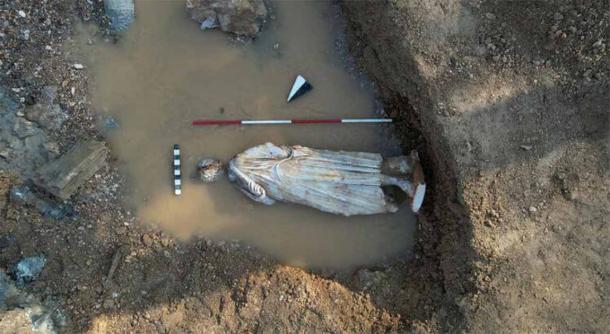
Almost intact statue recently uncovered at Aizanoi. (Dumlupınar University)
Bridge Building Amidst Stone Giants
Excavation leader, Gokhan Coskun of Dumlupınar University, said if these newly discovered statues were complete they would reach “3 meters (9.84 ft) to 3.5 meters (11.48 ft) in height.” The “almost intact statue,” representing the only one of its type so far discovered, features a gigantic (in ancient Roman terms) man measuring 2 meters 10 centimeters (6’ 10”) high. The statue is missing only half of its pedestal and one foot. And besides all of these unearthed human and god forms, the archaeologists also discovered building blocks from bridge No 3, and they even unearthed a sundial.
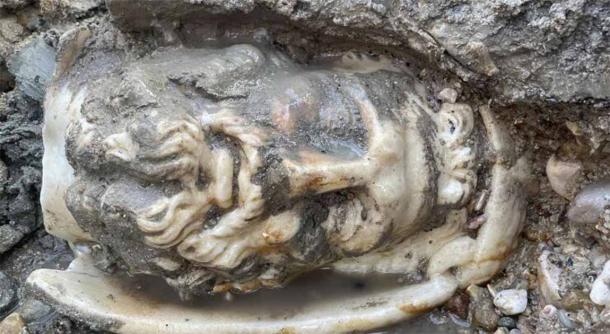
Another god’s head uncovered at Aizanoi. (Dumlupınar University)
From the Bronze Age till the late seventh century, and then again by the Çavdar Tatars in the 13th century, the ancient city of Aizanoi was constantly occupied. Ancient Origins reported in November 2021 that the site’s excavation coordinator, Gokhan Coskun, told the Greek Herald that “the bodies of the statues were found in a previous dig, whilst the 5000-year-old Greek statue heads of the Greek goddess of love and beauty, Aphrodite and Greek god of wine, Dionysus, were unearthed in a creek bed in the ancient city.
- Prometheus: The Creator of Mankind Who Stole Fire from the Gods
- My Name Is Heracles, And I Have Father Issues
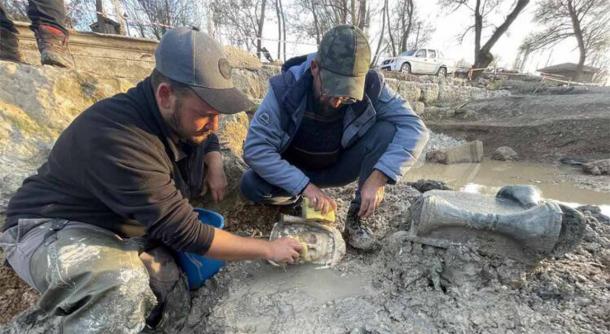
Archaeologists cleaning off another statue head at the site. (Dumlupınar University)
Unearthing A Once Thriving Elite Ancient City
During the Hellenistic Period the ancient city of Aizanoi was controlled by the hegemonies of the Pergamon and Bithynia Kingdoms, only coming under Roman control in 133 BC. Gökhan Coşkun told Hurriyet Daily that the newly discovered statues date back “2,000 years”, and said “new artifacts are found every day.” Coşkun declared that this season's “surprising finds made the team very excited,” and especially in the area where the bridge crossed the Penkalas Stream.
According to a report on DPU Habar, the ancient city of Aizanoi, which dates back to 3,000 BC, was equipped with a theatre, stadium, agora and Zeus Temple. This year, “80 workers and 20 technical staff” focused on the Penkalas Stream area where they restored a Roman-era marble bridge (No: 2) and continued rebuilding the currently completely ruined bridge (No: 3). While the recovery of these bridges will inform the archaeologists about ancient building methods and processes, the world looks on in awe at the swelling collection of human bodies and heads dating back 1,800-2,000 years ago”.
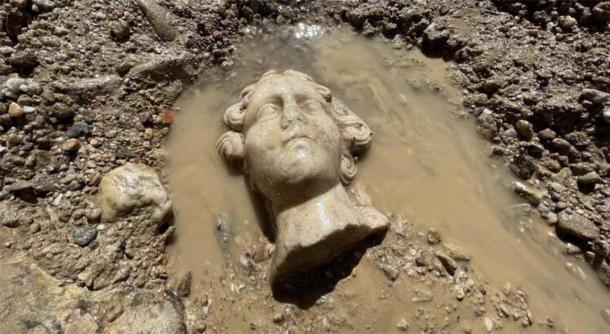
Heads of gods and humans just kept emerging from the mud. (Dumlupınar University)
Quest For The Giant’s Missing Foot
Every year archaeologists dig a little deeper into the rubble that is the ancient city of Aizanoi, and more and more bodies and heads of humans and gods are brought to the surface. However, as the artifacts pile up a big outstanding question becomes amplified, among both the researchers and the public. How, or rather why, did all of the carved heads become detached from the statue’s bodies?
In 2021 Mail Online reported that it was “not yet clear” how the heads and bodies were separated, and still today this remains unanswered. But so far as educated guesses go, it is thought most probable that an ancient stone masons' school, or a sculpture workshop “produced the magnificent statues,” according to Gokhan Coskun. The researcher concluded that his team was “very excited” about the statue they found in the recent excavations, which is ‘almost’ completely preserved, and he said they hope to find the giant man’s missing half pedestal and foot in 2023.
Top image: Statue emerging from red mud at Aizanoi. Source: Dumlupınar University
By Ashley Cowie


















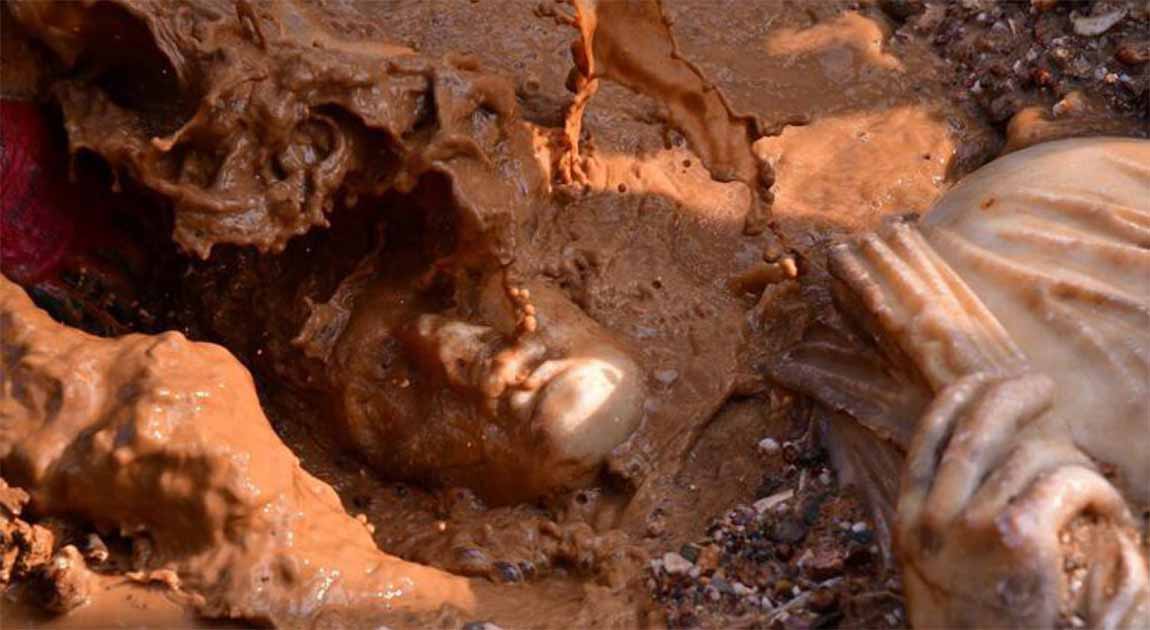

Comments
Obviously pre-Ice Age/Atlantean era. Nobody abandons a place like that and lets time bury it. It was likely destroyed in a day, or short time, from above, like Atlantis. They should find the foot if they keep digging. Or did it just walk away?
Nobody gets paid to tell the truth.